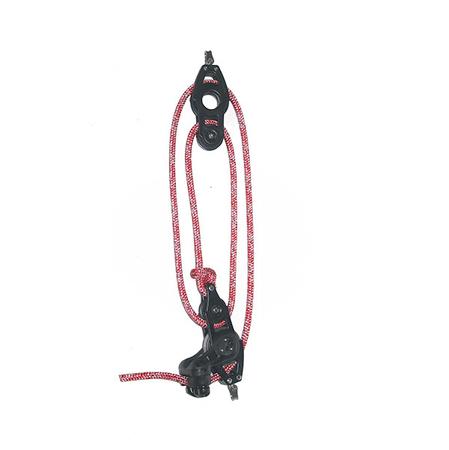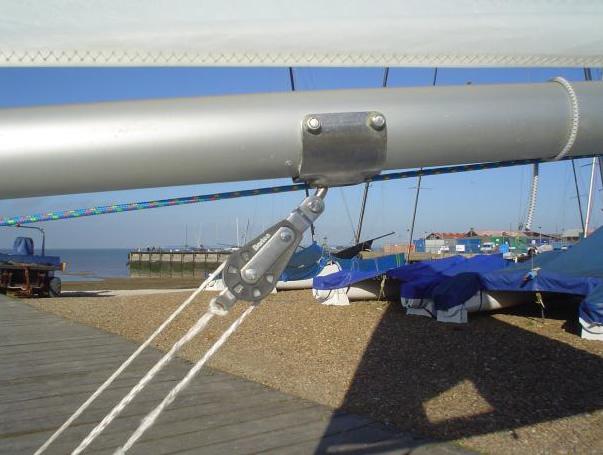Guide To Selecting Pulley Blocks
General Guide On Pulley Block Selection
When it comes to selecting pulley blocks for sailing boats the range of options at first can seem daunting to say the least. Even if you are replacing an existing pulley block you will most likely be faced with quite a few choices, so in this guide we aim to simplify the process. Some of the main choice factors are listed below.
- Line size
- Swivel or fixed
- Double or single (or even more) pulley block
- With or without becket
- Ball bearings or plain bearings
- Ratchet or non-ratchet
Line Size: First and foremost pulley blocks have an intended range of line or rope sizes to which they are suited. For example one of our pulley blocks here .....
has a line size of up to 14mm. The 14mm is the nominal diameter of the line, if lines of greater thickness are used they might not freely fit through the pulley block. Also of consideration at this point is the rated load of the pulley block. If you know what rated strength is required then all well and good and you can ensure that the block you buy has a suitable rating, but often you may not know what strength rating is suitable for the particular use on your boat and if this is the case the next best thing is to get an equivalent or greater line size specification than the one you are replacing or the line size that you are using.
Swivel or Fixed: In many cases a fixed pulley block is absolutely fine, and a swivel is not needed. However, when the line of rope tension will be variable for example a foresheet block running on a track, for different points of sailing the line of the block axis will change and a swivel block is best to to allow the sheet for run freely under all conditions.
Double or Single. A system of pulley blocks can offer great mechanical advantage if arranged in the right way, and using double pulley blocks is one way of achieving this. What this means is the the operator pulling a single line can pull a higher force on the load. The mechanical advantage is determined by the number of effective lines between each end of the pulley block system.

In the example shown below there are 4 lines beteen each end of the pulley block sytem. This means that if the operator pulls his line with a force of 10kg then the load well see a load of 40kg. The compromise though is the the more mechanical advantage you have, the more length of sheet you will have to pull to achieve the movement that you want.
Becket. Some blocks have an additional attachment at the opposite end to the fixed or held end of the pulley block, called a becket. These allow great flexibility when using a block as part of a system of pulley blocks such as a main sheet system offering great mechanical advantage.
Here is an example of a main sheet pulley block system, making use of a block with becket.

Bearings: Ball bearings / roller bearings or plain bearings. Bearing choice comes down the the compromise between cost and peformance. In many cases plain bearings are absolutely fine and will offer good value for money. If you want the smoothest running option, whether that is for ultimate racing sailing or just to save a little energy then ball bearing or roller bearing blocks should be chosen.
Ratchet: Some pulley blocks come with an internal ratchet system which allows the pulley block to turn freely one way, but lock in the other direction or rotation. Our ratchet blocks shown here...
have a release lever to allow the block to run free in both directions. The release lever is designed to that it can be released even when the block is under load.
Ratchet pulley blocks are great for racing or other situations where the sailor wants to constantly adjust the rope or sheet. The ratchet makes it easier to hold the sheet under load by hand, but much quicker to release for adjustments.
Our full range of pulley blocks can be found by clicking HERE
If you would like any further advice please do not hesitate to get in contact with us by phone or email.
If you found this guide useful or interesting you might like to sign up to our newsletter, so that we can let you know when our next guide has been published.


